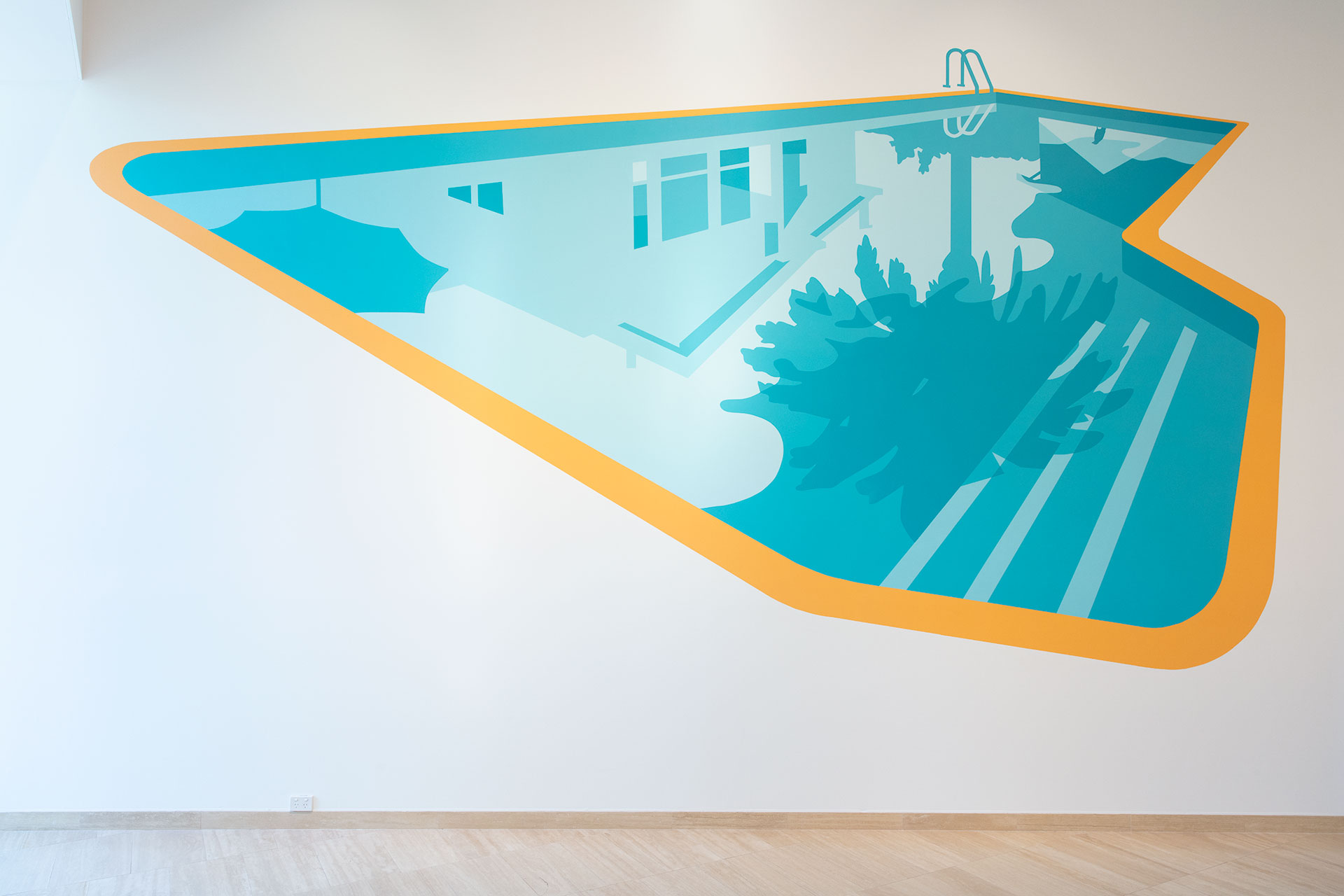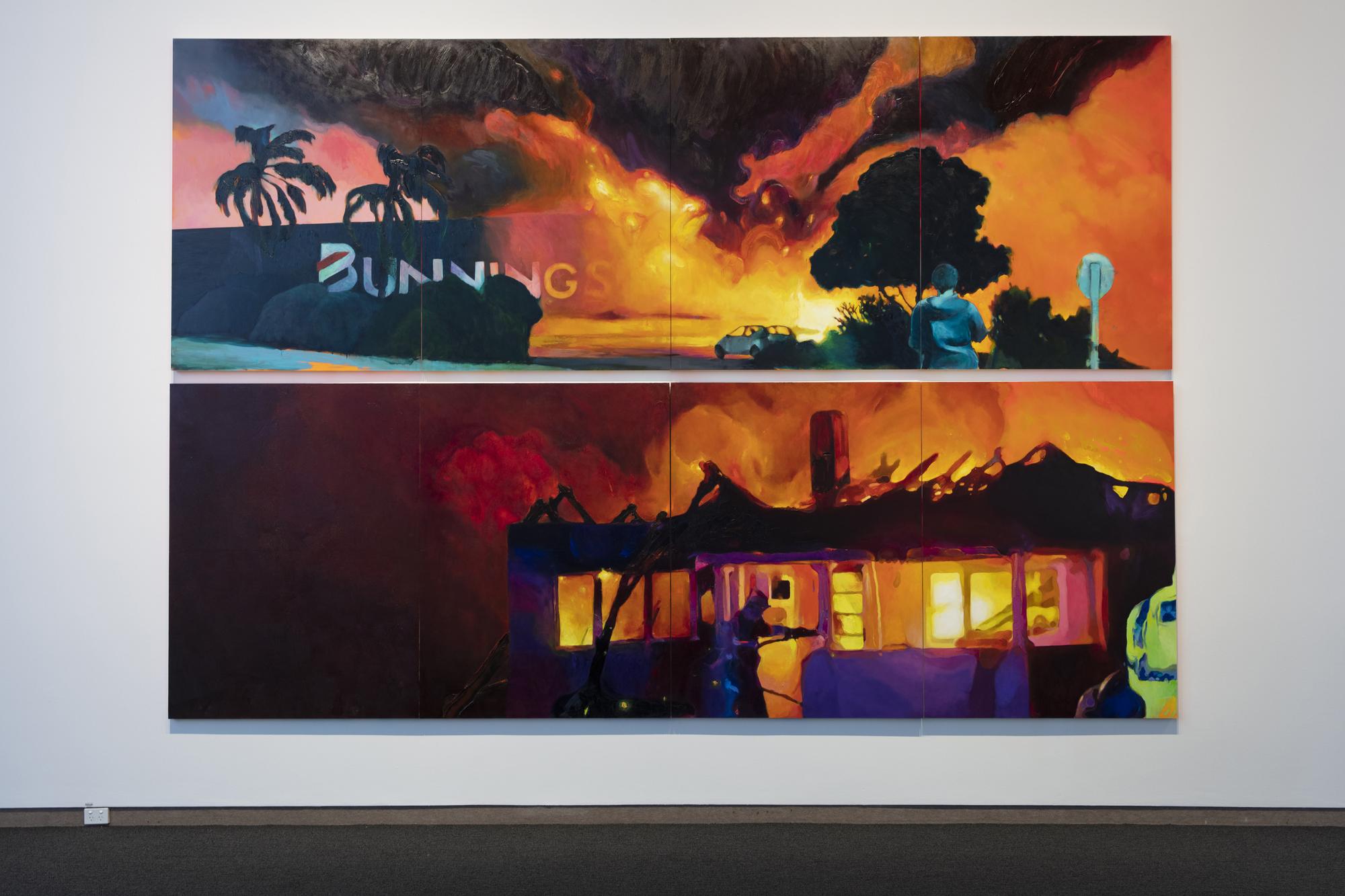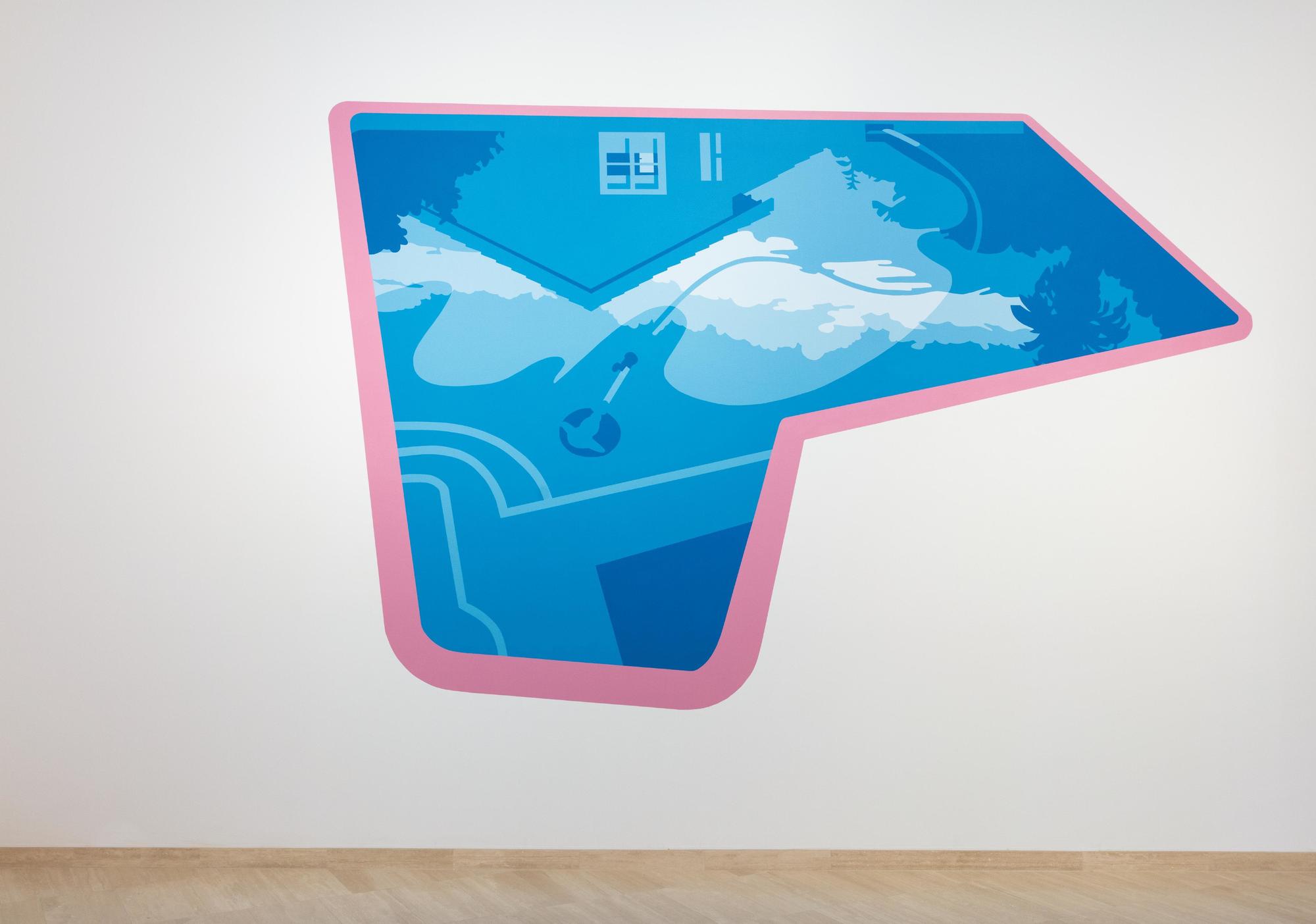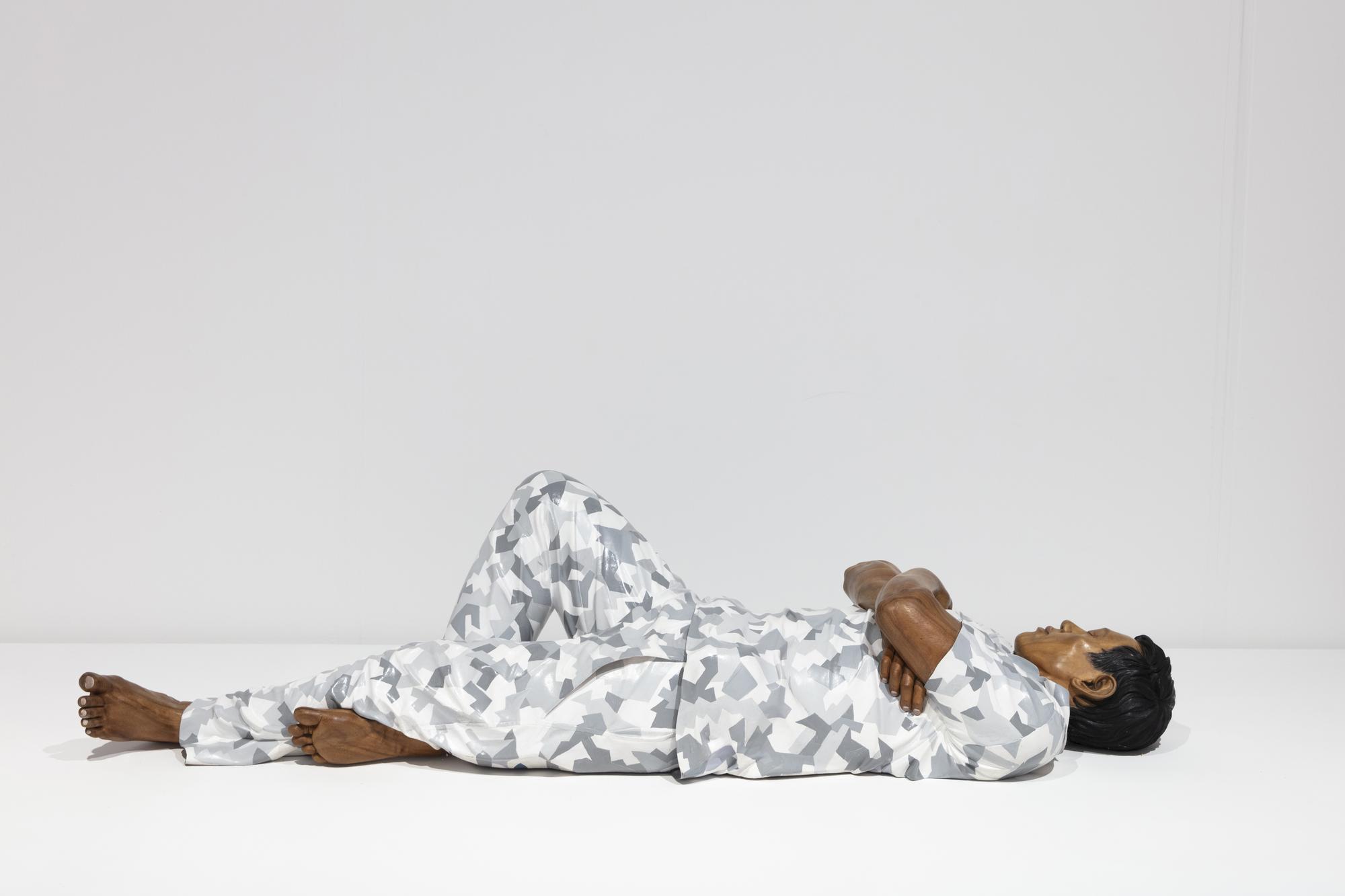Wade Taylor & Joanna Lamb: Symbols of suburbia
Backyard swimming pools and a Bunnings set ablaze in two new large-scale painting commissions ask viewers to reflect on cultural identity and the attachments we form to the mundane.

Joanna Lamb Pool [4] 2021. Acrylic paint, Dulux Shimmer Quarter, Dulux Shimmer, Dulux High Blue, Dulux Water Raceway, Dulux Wing Commander, Dulux Kiss, 350 x 500 cm. State Art Collection, Art Gallery of Western Australia. Purchased through the Art Gallery of Western Australia Foundation: TomorrowFund, 2021.
SUBURB ARE MANY things—an expression of ordinariness; a stage of colonial settlement in its most mundane form; a space of myth-making and nostalgia. Suburbia is an emptied-out site in which we project ideas, a site we mould and recreate in our own image. It is a realm for optimism and aspiration and similitude and weariness; an imaginary setting; a site of gothic tension. It is also a real place that many of us live.
Joanna Lamb’s large-scale swimming pool murals and Wade Taylor’s huge oil paintings of suburban fires in The View From Here exhibition exemplify these complexities and contradictions.

Top to bottom: Wade Taylor that explains the sirens 2021, We know where u live 2021. Oil and acrylic on wood, 162 x 488 cm (overall) 4 parts 162 x 122 cm (each). Photography by Bo Wong.
They are a kind of homage or celebration: beautiful renderings of the contemporary built suburban landscape that also encapsulate an ambivalence many of us feel toward these liminal places. The images probe the suburban imagination, both with a fondness and a cynicism. Swimming pools became common in backyards all over Perth during the boom of the 1980s, and Bunnings—one of Australia’s oldest companies—continues to grow both in size and in significance as recent border closures emphasise our connection to home. Both have come to represent mundane good living and speak to the aspirational class reality of many Australians. They are cultural icons.
Lamb’s pools are rendered beautifully plastic, and in each, the water’s reflection of the homes around it present a cool, idyllic, private nirvana, distilled into a shiny essence. They are idealised portraits that engage with family album and postcard imagery.
As images of rich blues and dark reds and oranges, the artists’ works both contrast and complement each other. They are saturated scenes of a scale beyond the individual. Lamb’s pools are rendered beautifully plastic, and in each, the water’s reflection of the homes around it present a cool, idyllic, private nirvana, distilled into a shiny essence. They are idealised portraits that engage with family album and postcard imagery.
Meanwhile, Taylor’s works depict two scenes: one, a re-creation of a television news still of the burning Inglewood Bunnings; the other, a documentation of the blaze that destroyed a home he had recently moved out of. Both capture the awe, amazement, shock and unease of witnessing such events and the melancholia and self-effacing humour attached to elevating a real historical event that is, for better or worse, seared into local memory.

Joanna Lamb Pool [5] 2021. Acrylic paint, Dulux Bluish Water Half, Dulux Salt Lake, Dulux Sparkling Cove, Dulux Jaded, Dulux Burning Flame, 350 x 500 cm. State Art Collection, Art Gallery of Western Australia. Purchased through the Art Gallery of Western Australia Foundation: TomorrowFund, 2021.
From their respective positions spanning AGWA’s ground and first floors, Lamb and Taylor’s works contrast at the level of image, history and reference. Each work is both chronicle and critique of suburbia at a grand scale, speaking to a specificity of place and yet gesturing elsewhere, to the spectacular and the sublime.
Such suburban scenes are inextricable from contemporary concerns about climate change. Fire as an elemental and necessary part of the Australian bush can be regenerative but also destructive and threatening. There has always been an undercurrent in Australian suburbia that speaks of a gothic and macabre possibility here, a tendency for violence just below and on the surface. Likewise, these fenceless pools invite danger. Water is necessary to quench parched earth but here its unnatural containment speaks to over-consumption and unsustainability. Viewing the works in succession, the viewer is asked to reflect on their own relationship to resources and their complicity in a shared lifestyle.
Fire as an elemental and necessary part of the Australian bush can be regenerative but also destructive and threatening. There has always been an undercurrent in Australian suburbia that speaks of a gothic and macabre possibility here, a tendency for violence just below and on the surface.
The works evoke both a private and public sphere, inviting the viewer to question their role in suburbia—to consider its idiosyncrasies as well as its flatness—and to think about their impact on the world. Such artistic representation, questioning and celebration of suburbia means thinking about the ethics of its places and people. And here, as we reflect on the trauma and nostalgia of common tropes and close geographies, we might consider more carefully the role of art in everyday life.
This article was first published in the print publication The View From Here in October 2021 under the title Symbols of Suburbia.

